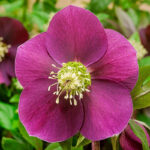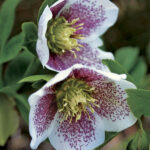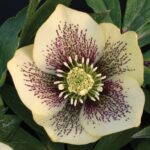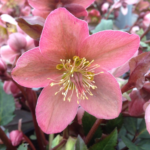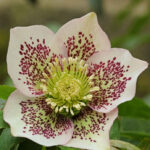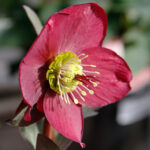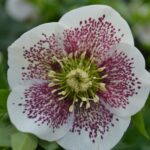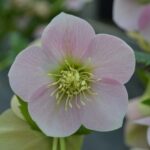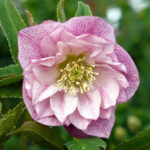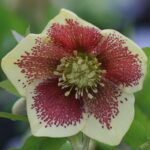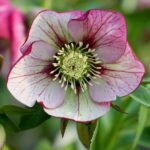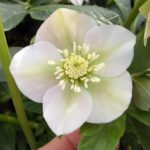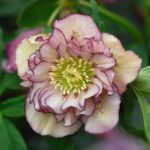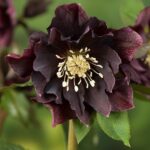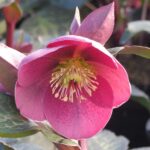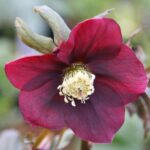Hellebores are part of the Ranunculaceae family and are native to Europe and Asia. They are evergreen perennials with leathery, deep green foliage and nodding flowers that come in a variety of colors including white, pink, purple, and green. Hellebores are valued for their ability to bloom in late winter to early spring, often when little else is flowering.
2. Choosing the Right Location
- Light: Hellebores thrive in partial to full shade. They do best under deciduous trees where they get sunlight in the winter and spring before the trees leaf out.
- Soil: They prefer well-drained, humus-rich soil with a neutral to slightly alkaline pH. Amend heavy clay soils with organic matter to improve drainage.
- Spacing: Plant hellebores about 18 inches apart to allow for their mature size and spread.
3. Planting Hellebores
- Timing: Plant hellebores in the fall or early spring.
- Planting Depth: Dig a hole that is twice the width of the root ball and deep enough so the crown of the plant is at soil level.
- Watering: Water thoroughly after planting to help the plant establish roots.
4. Watering and Fertilizing
- Watering: Hellebores are drought-tolerant once established but will benefit from regular watering during dry periods, especially in the first year after planting.
- Fertilizing: Apply a balanced, slow-release fertilizer in early spring as new growth begins. Avoid over-fertilizing, which can lead to lush foliage at the expense of flowers.
5. Mulching
Mulch around the base of hellebores with organic matter such as compost or leaf mold. This helps to retain moisture, suppress weeds, and improve soil structure. Keep mulch away from the crown of the plant to prevent rot.
6. Pruning and Maintenance
- Pruning: In late winter or early spring, before new growth starts, cut back the old, tattered leaves to make way for the new growth and flowers. Remove any dead or diseased foliage throughout the year.
- Dividing: Hellebores can be divided every few years in early spring if they become crowded. Dig up the entire plant, carefully divide the clump with a sharp knife, and replant the divisions.
7. Pests and Diseases
Hellebores are generally resistant to pests and diseases. However, they can occasionally be affected by:
- Aphids: These small insects can be controlled with insecticidal soap or by spraying with water.
- Slugs and Snails: These pests can damage new growth and flowers. Use slug pellets or traps to manage them.
- Black Spot: A fungal disease that causes black spots on leaves. Remove and destroy affected leaves and ensure good air circulation around the plants.
8. Winter Care
Hellebores are hardy plants that can withstand cold temperatures. However, in areas with severe winters, a layer of mulch or evergreen boughs can help protect the plants from extreme cold and frost heaving.
9. Propagation
Hellebores can be propagated by seed or division:
- Seeds: Collect seeds from mature plants in late spring or early summer. Sow them immediately in a cold frame or directly in the garden. Seeds can take several months to germinate and may take up to three years to flower.
- Division: As mentioned earlier, hellebores can be divided in early spring. This is the quickest method to propagate new plants.
10. Enjoying Hellebores
With their striking blooms and evergreen foliage, hellebores add year-round interest to the garden. They are perfect for woodland gardens, shaded borders, and container planting. Their early flowers provide a valuable source of nectar for pollinators emerging in early spring.
 Flower Love
Flower Love
